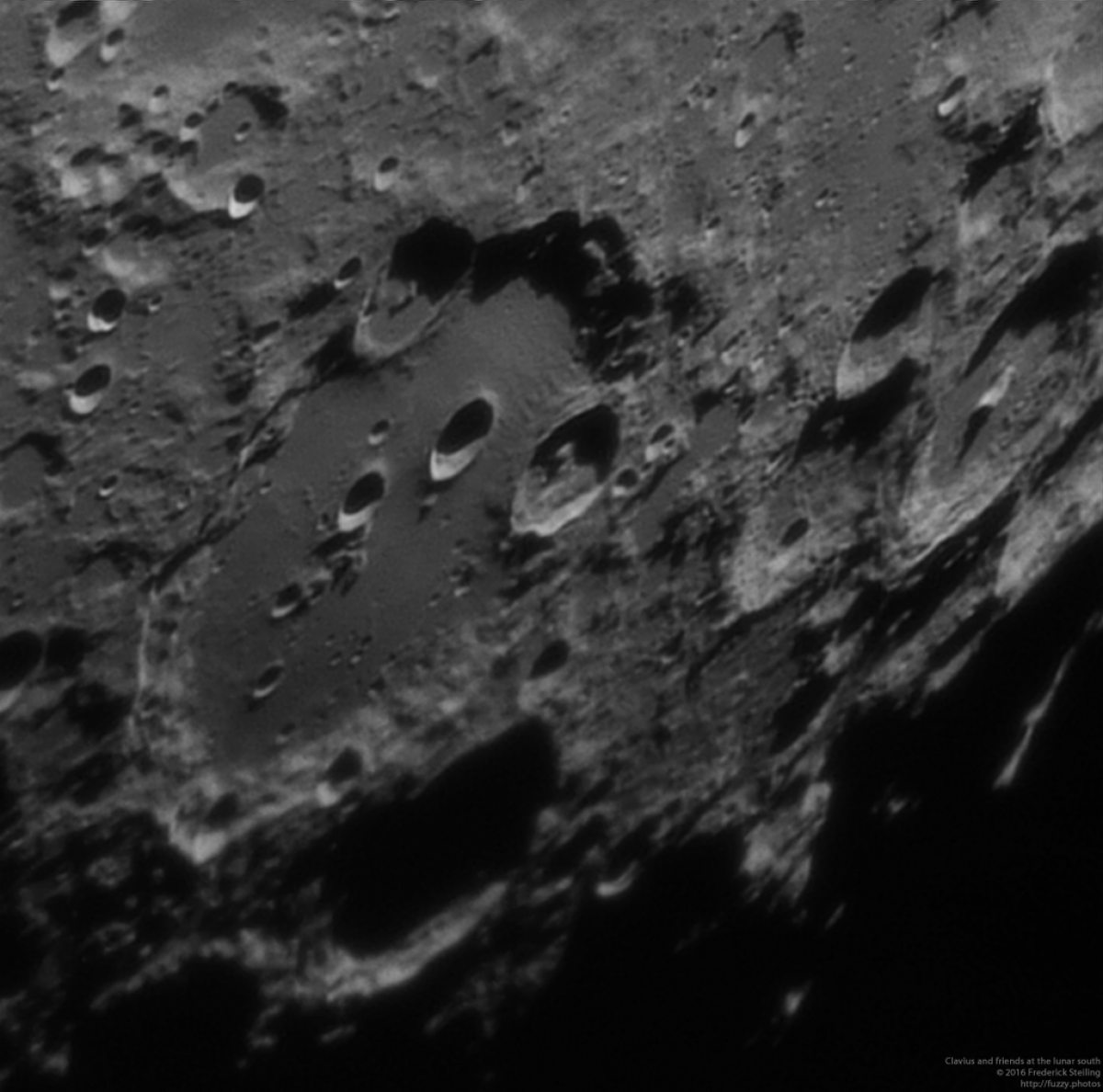| Image Links | |
| Published image | Full resolution |
| Annotated image | Full resolution |
| Target Information | |
| Main Target Designation(s) | Clavius |
| Companion Object(s) | Moretus, Blancanus, Porter, Rutherfurd, Cysatus, Gruemberger |
| Exposures | |
| IR filtered monochrome | 267 x 2.407ms at 85% gain |
| Video source | 5% of 4' video at 108 fps (avg) |
| Capture resolution | 800x800 |
| Date(s) of acquisition | 09Dec2016 at 00:29 |
| Location | Whiteside, MO |
| Equipment | |
| Imager | ZWO ASI120MM |
| Telescope/Lens | Orion 8" f/3.9 Astrograph (f/15.8 as configured) |
| Mount | Celestron CGEM |
| Focuser | Moonlite 2" Newtonian CR |
| Accessories | |
| Coma Corrector | None |
| Collimator | 2" Howie Glatter @ 650nm |
| Focusing | Moonlite Mini V2 High-res Controller |
| Magnifiers | Televue 2" Powermate 4x |
| Software | |
| Acquisition | FireCapture 2.4 |
| Guiding | None |
| Processing | AutoStakkert 2, Registax 6, PixInsight 1.8 |
I have finally completed setting up my full lunar/planetary imaging train with proper spacers and a filter wheel, and chose to attempt a close-up image of a neat southern region of the moon that is simply littered with ancient impacts.
Serving as a focus of the image is the large crater Clavius, which measures a sizable 225km/136mi in diameter, enough to fit the state of Connecticut with room to spare! Â It's easy to forget -- even on close-up images like this -- how large the moon and many of its features really are!
On this night, seeing was below average, as evidenced by huge atmospheric "waves" running over the frame throughout the capturing duration.  To help counteract this, I used an IR filter which blocks a significant portion of the visible spectrum, letting through wavelengths primarily between 742nm and 1100nm.  The IR band is less affected by these atmospheric distortions than is seen in the visible spectrum, thereby allowing my "small" 8" aperture to cut through the mud and get a respectably clear photo of this busy lunar region.

